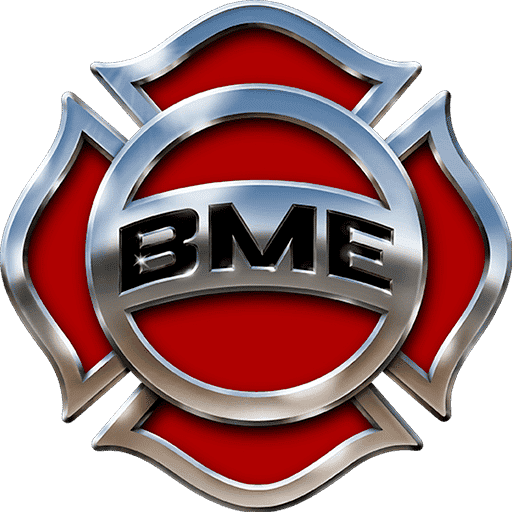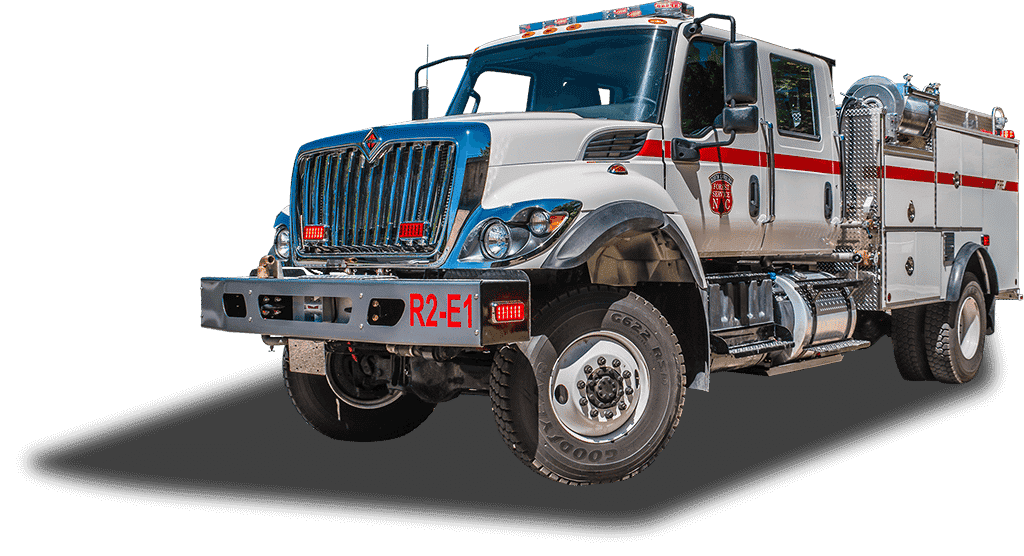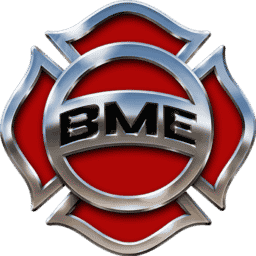New Ad Campaign Highlights the Significance of Safety Innovations

February 1 marks the official launch of our new ad campaign in Firehouse Magazine. This ad, featured in the February 2019 issue, is first in a series highlighting the aspects that make Boise Mobile Equipment (BME) stand out from competitors. We kick off the campaign with the feature we prioritize daily when building our trucks — safety.
It’s no secret that wildland firefighters face a unique set of hazards when responding to a fire. Falling trees, rough terrain, and vehicle rollovers are only a few of the dangers we take into consideration when designing our apparatus. Thanks to our tubular body construction, cab protectors, and enhanced tilt capability, every BME fire truck is guaranteed to get you there and get you home.
The Steel Skeleton
Just as a human body can’t function without a skeleton, and a building can’t stand without a frame, a truck’s body is only as strong as its framework. Most manufacturers in the industry construct their bodies from formed sheetmetal only, leaving it vulnerable to crushing if an accident occurs. That’s what makes BME different. The safety of our nation’s firefighters is our number one priority, so we aim to build the strongest body in the industry.
Our signature tubular constructed bodies are MIG and TIG welded aluminum, galvanneal, or stainless steel. First we start with 2”x3” tubing to form the body skeleton, wrapping it with 12 gauge stainless steel, galvanneal, or 3/16th inch aluminum. This adds a vital layer of protection for firefighting personnel and reinforces the cab and chassis. In the event of a rollover accident, the cab will not be crushed.

Proven to Save Lives
On July 15, 2015 a U.S. Forest Service Type 3 was en route to the High Sierra Ranger District in Prather, CA when it was sideswiped by an SUV. It was forced off the road, rolling four times before landing on its side. Since it was a BME-built truck, its tubular constructed body prevented the cab from being crushed and the structural integrity of the body remained intact, resulting in zero fatalities. Nine months later, one of the five firefighters involved in the accident visited our facility to express his gratitude for the tubular constructed body. He believed it helped in saving his and the others’ lives. We were thrilled that our steel framework played a role in his protection.
Rollover accidents don’t always have such happy endings. According to a study conducted between 1990 and 2009, vehicle accidents are shown to be the second leading cause of death among wildland firefighters. The fatality risk only increases when seat belts are not worn, which is sadly not uncommon. That is why we strive to reduce this fatality statistic, building a safer apparatus with tubular body construction.

Other Safety Innovations
Though our steel framework already greatly increases structural integrity, we are always looking for new ways to improve the safety of our apparatus. That’s why we recently added 4”x4” steel tubing cab protectors to our U.S. Forest Service Water Tenders.
With the fire body protected by a steel framework, we turned our attention to the chassis for our next innovation. Since firefighters spend much of their time in the cab, we added a key safety feature to the chassis to increase occupant protection. Our Water Tenders seemed like the natural place to start, their low bodies making them especially susceptible to rollover damage.
Our 4”x4” steel tubing cab protector has cross-braces that prevent the cab from being crushed level to the tank during a rollover. Its triangulated points, or gussets, provide increased strength and reduce crushing points. The rack is solidly secured to the chassis with triple passed welds, beveled joints, and grade 8 hardware. We also use rubber body mounts to eliminate the vibration caused by traveling over rough terrain or at high speeds.
Another focus of our safety innovation program is the tilt table. We build our trucks with a low center of gravity to allow for a steeper tilt, making them more maneuverable over wildland terrain. While NFPA standards require a tilt of 26.5 degrees, BME apparatus can achieve a tilt of 35.2 degrees. This is just another reason why Boise Mobile Equipment has become the go-to apparatus manufacturer in the wildland industry.
Although we continue to add new innovations, the secret to BME’s superior safety lies chiefly the strength of our material. With options like stainless steel, galvanneal, and 3/16th inch aluminum, you can be certain you’re getting the sturdiest apparatus on the market. Through our collaborative design process, we leave it up to you to decide what materials suit your needs the best. With your safety on the line, we never take shortcuts.


Keeping You Safe for 20+ Years
Because of the quality that goes into every step of the building process, our trucks have stood the test of time. Some of BME’s earliest apparatus, including a few U.S. Forest Service trucks from the early ’90s, are still in use to this day. Satisfied with their BME trucks’ performance over the last two decades, USFS is continuing to add more BMEs to their fleet.
Other vintage BME models are being auctioned in excellent working condition. Older BME apparatus are quite popular among volunteer fire departments looking for a reliable, cost-effective workhorse. We recently donated a 1980 Western State Pumper to a volunteer fire department in Owyhee County.
Our trucks are built to last because safety is our top priority. Building the BME way means we put thought into every step of the process, constructing high quality apparatus that get the job done year after year. That’s the BME difference.
Previous Next
Get in Touch
Fields marked with an asterisk (*) are required.



